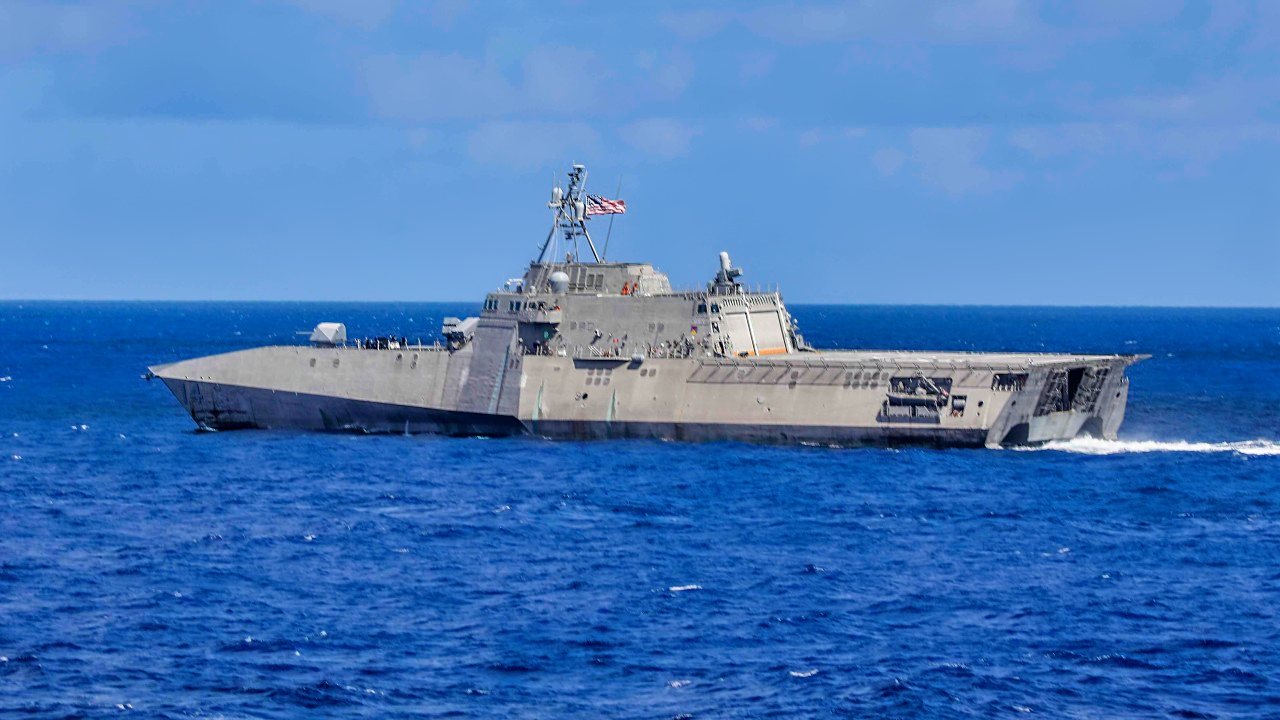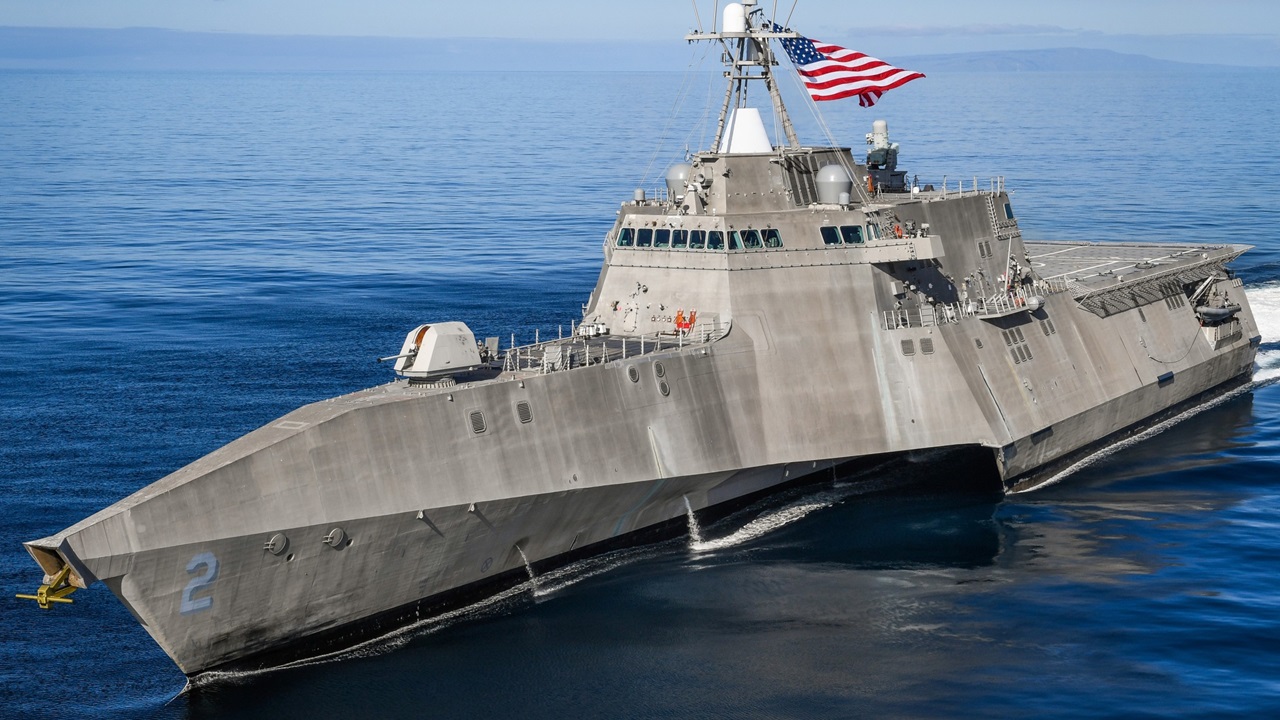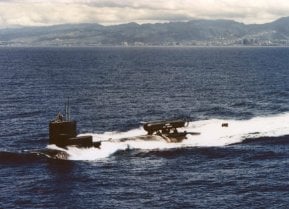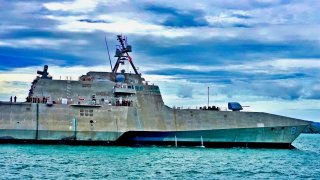Littoral Combat Ship Might Be Making a 'Comeback'
The Navy’s LCS, designed to provide a small, fast, maneuverable, and inexpensive family of surface ships, is capable of taking on many roles. From intelligence and surveillance to anti-surface warfare and special operations, these ships were intended to support the service’s mission to “unman the front lines” when introduced.
What You Need to Know: The U.S. Navy's Freedom-variant littoral combat ship (LCS) USS Nantucket (LCS-27) was commissioned in Boston, Massachusetts. As the fourteenth ship in its class, Nantucket is designed to counter asymmetric threats in coastal waters.

-However, the LCS program has faced criticism due to developmental delays, performance issues, and a reputation for unreliability—some sailors have even nicknamed them "Little Crappy Ships."
-Despite these shortcomings, the Navy plans to repurpose these vessels as modern mine countermeasure ships.
-The USS Nantucket will be equipped with advanced systems like the Over-the-Horizon Naval Strike Missile to enhance its capabilities in detecting and neutralizing mines.
Reinventing the Littoral Combat Ship: USS Nantucket's New Mission
The U.S. Navy’s Freedom-variant littoral combat ship (LCS) USS Nantucket (LCS-27) was commissioned this weekend in Boston, Massachusetts. As the fourteenth ship in its class of surface ships, Nantucket will be expected to perform in coastal waters to counter a range of “asymmetric threats,” according to the Navy.
“The crew, along with our industry partners, have worked tirelessly over the past several years to bring the USS Nantucket (LCS 27) to life, and I am proud of each of them for their contributions and service,” said Secretary of the Navy Carlos Del Toro. “Nantucket already made an impact when she supported a U.S. Coast Guard operation in October in Lake Erie. I take great pride in knowing that Nantucket represents the future of our Fleet and Force -- equipped with advanced technology and sailed by our Navy’s best and brightest crews.”
While the repurpose of these ships is notable, both Freedom and Independence-class ships have earned a lackluster reputation for their subpar performances in service. From developmental delays, acquisition adjustments, low combatant command demand, and various other shortcomings, these surface ships have garnered quite a poor reputation. In fact, these small and fast ships have even been dubbed “Little Crappy Ships” by some sailors.
Introducing the LCS family of ships
The Navy’s LCS, designed to provide a small, fast, maneuverable, and inexpensive family of surface ships, is capable of taking on many roles. From intelligence and surveillance to anti-surface warfare and special operations, these ships were intended to support the service’s mission to “unman the front lines” when introduced. The concept of LCS was initiated back in the early 2000s. Lockheed Martin and Austal AUSA were awarded the contract to construct up to ten ships each in 2010, culminating in the arrival of the Freedom-class USS Freedom and Independence-class USS Independence.

While the LCS proposed capabilities seemed solid, the ships did not live up to expectations. Perhaps first and foremost is the surface ships’ propensity to crack. The Navy Times reported that these cracks presented themselves when the ships traveled faster than 15 knots. Additionally, transmission issues have plagued the ships. All in all, the LCS were not deemed reliable and therefore several of these vessels were decommissioned earlier than expected.
Despite the LCS shortcomings, the Navy has found a new role for these surface ships—as a modern mine countermeasure vessel. This integrated suite of unmanned maritime systems and sensors is capable of detecting and taking out mines in the littorals while extending the ship’s standoff distance from the threat area. As detailed by the Navy, “Embarked with the MCM mission package, an LCS or a vessel of opportunity can conduct the full spectrum of detect-to-engage operations (hunt, neutralize and sweep) against mine threats using sensors and weapons deployed from the MCM Unmanned Surface Vehicle (USV), an MH-60S multi-mission helicopter and associated support equipment.”
When USS Nantucket is introduced to service, she will be equipped with Over the Horizon-Weapons System Naval Strike Missile, which provides the United States with a long-range anti-surface offensive strike capability.
About the Author: Maya Carlin
Maya Carlin, National Security Writer with The National Interest, is an analyst with the Center for Security Policy and a former Anna Sobol Levy Fellow at IDC Herzliya in Israel. She has by-lines in many publications, including The National Interest, Jerusalem Post, and Times of Israel. You can follow her on Twitter: @MayaCarlin. Carlin has over 1,000 articles published over the last several years on various defense issues.
Image Credit: Creative Commons and/or Shutterstock


